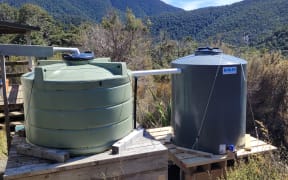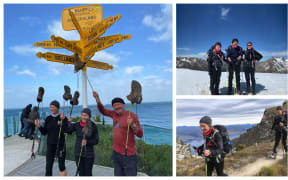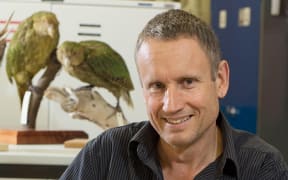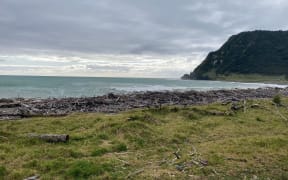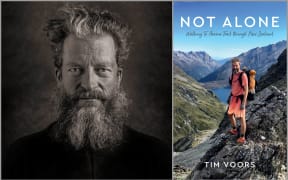
Celia Wade-Brown at Martins Hut in Southland. Photo: Supplied
A former Wellington mayor has described what scared her most and the food she craved while walking the length of New Zealand on the Te Araroa trail.
Celia Wade-Brown, Wellington's mayor for six years until 2016, former Wairarapa Green Party candidate, and now trustee of the Te Araroa Trust, took on the hiking challenge shortly after hanging up her mayoral chain.
The continuous trail has been described as the 'ultimate Kiwi experience', but Wade-Brown said the track is surprisingly accessible to a wide-range of hikers.
"You don't have to be a super-fit 25-year-old," she said.
The 3000km trail, from Bluff to Cape Reinga, goes through almost every type of Kiwi landscape.

Along with clear lakes, rolling hills, mountain-top views, and clear night-sky, Wade-Brown said the small towns and their inhabitants along the way were a highlight.
She and her husband did the walk in three stages, starting in Bluff. The first section took them to Ship Cove in the Marlborough Sounds. Then Cape Reinga to Auckland, and the final stretch from Auckland back to Wellington. Both islands took about 75 days, five months in total.
"That first part is not the hardest part of Te Araroa, it's not easy but it's not the hardest part."
"When we arrived in Auckland it was coming into Autumn. You couldn't hire a canoe on the Whanganui River, and the forecasts were really bad, so we took a couple of months off and went back and finished Auckland to Wellington in the Spring."
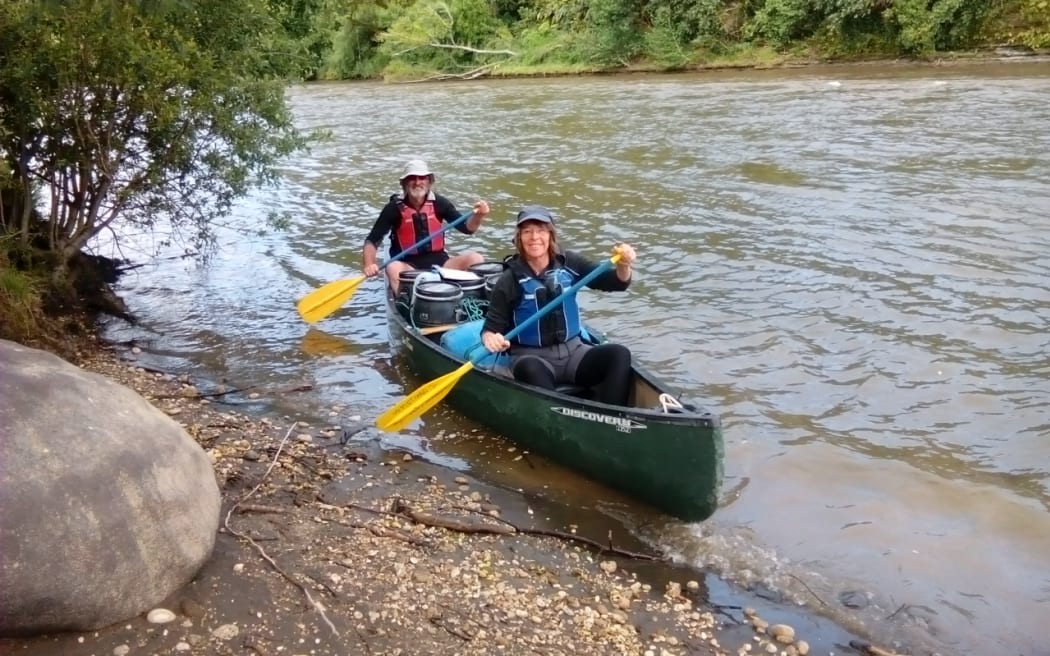
Celia Wade-Brown and her husband Alastair Nicholson canoeing from Taumaranui to Whanganui. Photo: Supplied
She said some sections had been less difficult than expected, but there had been challenges.
"One of the most scary parts was walking along to Top Timaru hut. There are some really steep banks to the Timaru river.
"It was vertical, and you are only about 10 centimetres from the edge. The track was a bit crumbly and with a decent sized pack, there wasn't really room for you and the pack unless you did a bit of sidling."
She estimated that drop was at least 20 metres down.
Another gnarly moment happened just south of Hamilton.
"One of the times I was most glad to get to the end of the day was when we went up Mount Pirongia.
"We got up to the hut at the top at about nine o clock at night, in the dark in the pouring rain. It was very muddy."
There were more good memories than bad ones though.
"Waking up in the tent in the middle of nowhere. That's absolutely the best part," she said.
"The whole thing of going to sleep when there's no human lights or sounds around and then waking up in the morning. It's lovely.
"The scenery was glorious. One of the highlights would be the Tararuas. The South Island scenery is magnificent with its beaches and tussocks. The Tararua ranges have this amazing variety of plants."
She said Ninety-mile beach was a bit less than ninety miles but felt longer.
"It just looks like it goes on forever."
Tramp training
Training for the hike involved regular weekly walks with Wellington's Tararua Tramping Club, and a bit extra.
"I did something I don't usually do - I went to the gym a couple of times a week. I aimed for three [sessions] and I usually made about two," she said.
"They specifically helped me with a programme for tramping with a heavy pack."
The work had been important because on Te Araroa, distances were long and there were not always places convenient to stop.
"It is possible to get fit as you go, and we certainly got a lot fitter, but that first day from Bluff to Invercargill you can't really mess around. It's 34 kilometres. It's not steep but it would be a long way to walk if you hadn't done any training."
Daily distances had varied, with about one rest day a week.
"If it's flat or through farmland, you can do 30 or more kilometres a day. If it's really tricky steep stuff, sometimes it's less than 10km."
Track treats
Logistics combined initially having pre-packed supplies dropped off at the road-end to stocking up at local shops, dairies or gas stations along the way.
"For example, for breakfast, we had little bags of muesli with dried milk mixed in with it and dried apricots that we soaked the night before.
"The most we had was about eight days food to carry. So, it was packaging up enough for that number of days."
After days carrying a pack of more than 12kg, creature comforts were relished.
"By the time I got back to a town where you could actually eat a meal, after five or six days in the bush, I started fantasising about menus, about milk shakes, and about huge salads and less healthy things as well," she confessed, laughing.
"After having dried food and packaged food, you are really ready for fresh food."
Essential gear included lightweight tents and walking poles, as well as things like a tramping stove, sleeping bags and wet weather clothes. Wade-Brown said with much of the trail away from cell-phone coverage, a locator beacon or something similar was a must for personal safety.
The weather was non-negotiable.
"Tramping day after day like that, you go out in pretty much every weather.
"In the morning, if your gear's not dry you have to put on your wet stuff. It's a really good exercise in delayed gratification."
She has since completed classic Kiwi trails like the Heaphy Track, and the old Ghost Road, as well as cycling tours. She has a strong interest in promoting walking and hiking and is a founding member of the Wairarapa Walking Festival.
People can walk the whole Te Araroa trail in one go or take a few hours or days on a local segment. More information about the trail, including what to take, distances and the app [available offline], is at https://www.teararoa.org.nz/.
Local Democracy Reporting is Public Interest Journalism funded through NZ On Air
